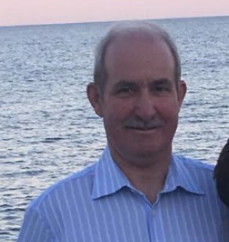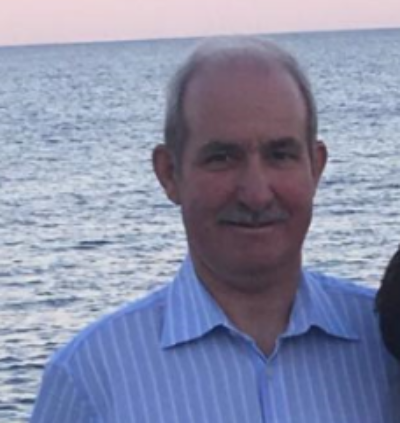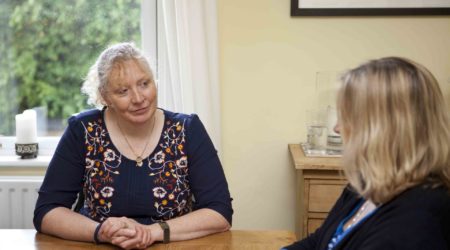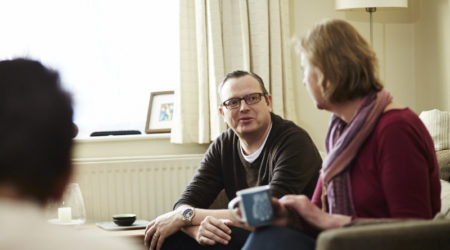

James
James shares his story of being diagnosed with inoperable pancreatic cancer in 2016 and having treatment, including irreversible electroporation (NanoKnife®)
My symptoms escalated quite suddenly really. I’d started to become quite tired and began gradually losing my appetite – I didn’t think much of it and put it down to my age and physically demanding line of work.
I was due to go on a cruise on 8th August 2016 with my wife and on the 7th went out for a farewell dinner with my family. During the meal my family noticed that my eyes were yellow, I was exhausted and couldn’t finish my dinner. Later that evening I went to the hospital (to be cautious as I was going away the next day) as I’d historically suffered from acid reflux and thought it was all interlinked.
During my initial consultation I was admitted and informed that they needed to carry out further tests as they were unsure what was causing the symptoms. I’d asked if it was anything sinister as I was due to go away the following day and the consultant replied ‘I wouldn’t advise leaving Manchester, never mind the country’. Upon admission, my bilirubin levels were high and I was informed that there was ‘something’ blocking the blood flow from the pancreas to the liver, which was causing the jaundice – I hoped this was gallstones.
Getting a diagnosis
A couple of days later I had a scan which revealed that there was a mass at the head of the pancreas, which was inoperable as it was wrapped around some of the main blood vessels. Within a couple of days I was due to have a stent fitted and a biopsy taken of the mass. The biopsy confirmed this to be pancreatic cancer.
My family and I were devastated. I was in hospital for 3 weeks as my bilirubin levels escalated to an alarming 358. The professor explained that the next step was to start chemotherapy in the hope that the mass would detach and then become operable.
Having chemotherapy
In October 2016, I began 12 gruelling cycles of chemotherapy over a 6-month period. I had a Hickman line fitted so that it would be easier to administer the treatment. Initially I coped well (good days and bad) but towards the end of the 12 rounds I had no energy and spent much of the time in bed. I lost 2 and a half stone over the 6 months due to the loss of appetite.
The main other symptoms I suffered were severe pins and needles in my hands and feet, taste buds effected (everything you ate tasted as if you were eating straw) and severe sensitivity to the cold. Macmillan nurses came out regularly and were a huge support. At the end of the chemotherapy I was prescribed steroids to try and build myself back up, these were reasonably effective and I started to gain weight again. Since then my taste buds have come back and I received some acupuncture to help with the pins and needles.
Further treatment
Following the end of the chemotherapy the PET scan showed that the cancer had not progressed, but had also not detached as hoped from the blood vessel. The doctor explained that there was a potential trial treatment, called irreversible electroporation (Nanoknife®), that may be coming to Manchester but nothing was yet confirmed. It was suggested that in the future I could be a potential candidate (there was a long list of different criteria to meet) which gave us all some hope.
In May 2017, I then started a 28-day course of radiotherapy alongside oral chemotherapy daily. Comparatively to the 12 rounds of FOLFIRINOX my symptoms were minimal and I was able to drive myself to and from my daily radiotherapy. At the end of the treatment I was told that I wouldn’t be back for another scan for 3 months.
Checking if I could have NanoKnife
On 15th June 2017 I had an unexpected phone call asking me to go in to hospital for a scan. I hoped this was linked to the NanoKnife, but was afraid to hope. Following the results of the scan I was informed that I was now a possible candidate for the NanoKnife which was soon coming to Manchester and was going to meet the doctor.
I went in to meet with the doctor and a HPB specialist nurse, who were incredibly thorough and provided me with much hope and reassurance. To ensure I was eligible for the trial, I had to conduct fitness tests, my breathing had to be monitored, I had a further PET scan and my stent needed to be changed to a plastic one instead of the metal one I had fitted.
Following the PET scan I was informed that a further CT scan was needed on my liver as ‘there was something there’. We were devastated as naturally you think the worst and we were so close to being able to have this treatment and now it was a possibility that I’d be no longer be eligible. After 4 long days the results were back and the doctor explained that the results were clear and he’d see me on Monday for the treatment – the relief was unimaginable!
Recovery from NanoKnife
On 2nd September 2017 I was the first person in Manchester to receive the NanoKnife®. I spent a week in hospital and then was discharged. The recovery from the major treatment was quite slow and was prescribed morphine to manage the pain.
In December 2017 my scan results showed that the tumour was inactive and that there was only debris left from the tumour. The routine scan in March 2018 showed the same.
Since my treatment finished I returned to work in March 2018. I still have routine scans every three months. The level of care I received over my journey has been phenomenal and having a strong support network around me was key.
August 2018


